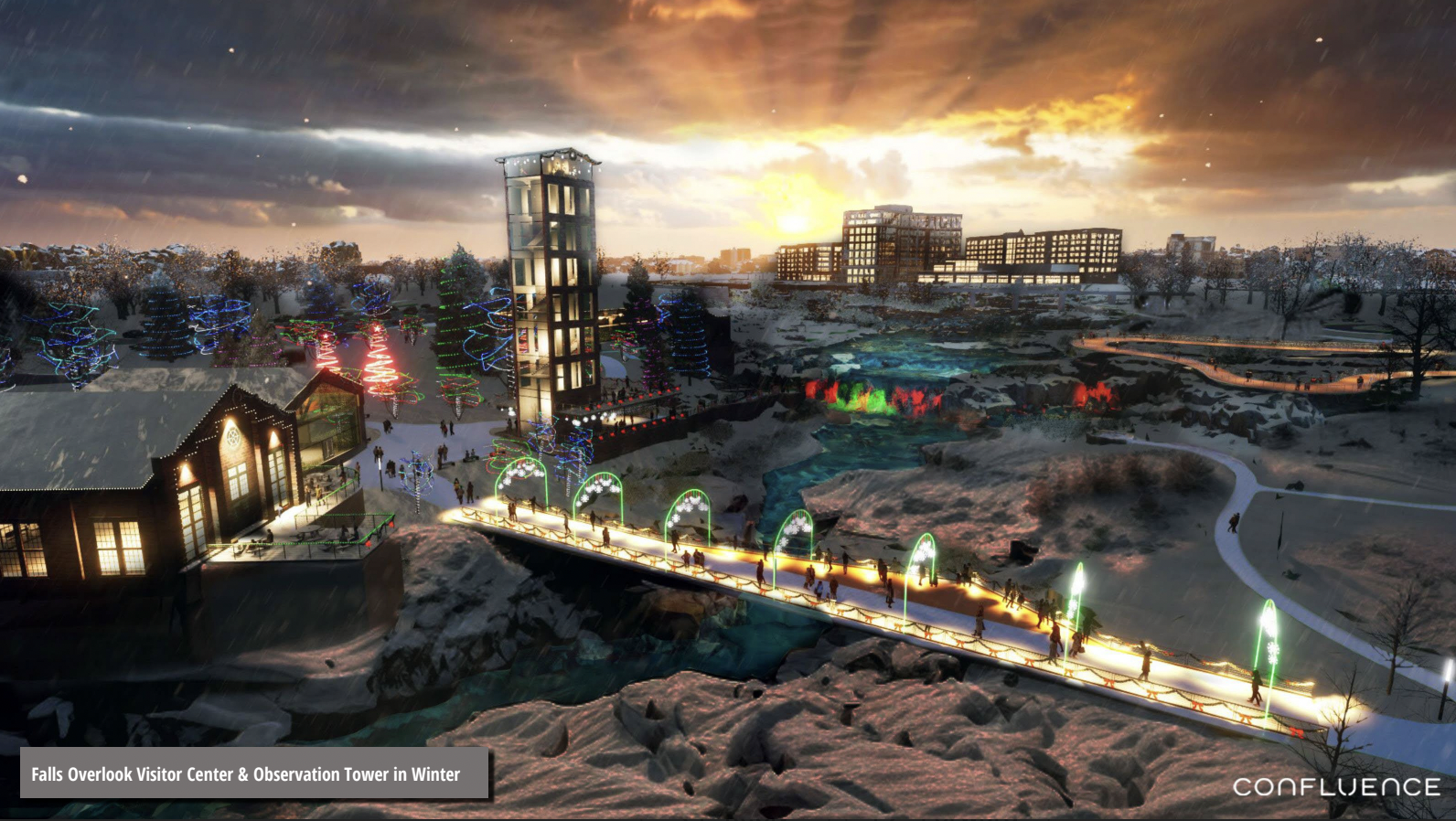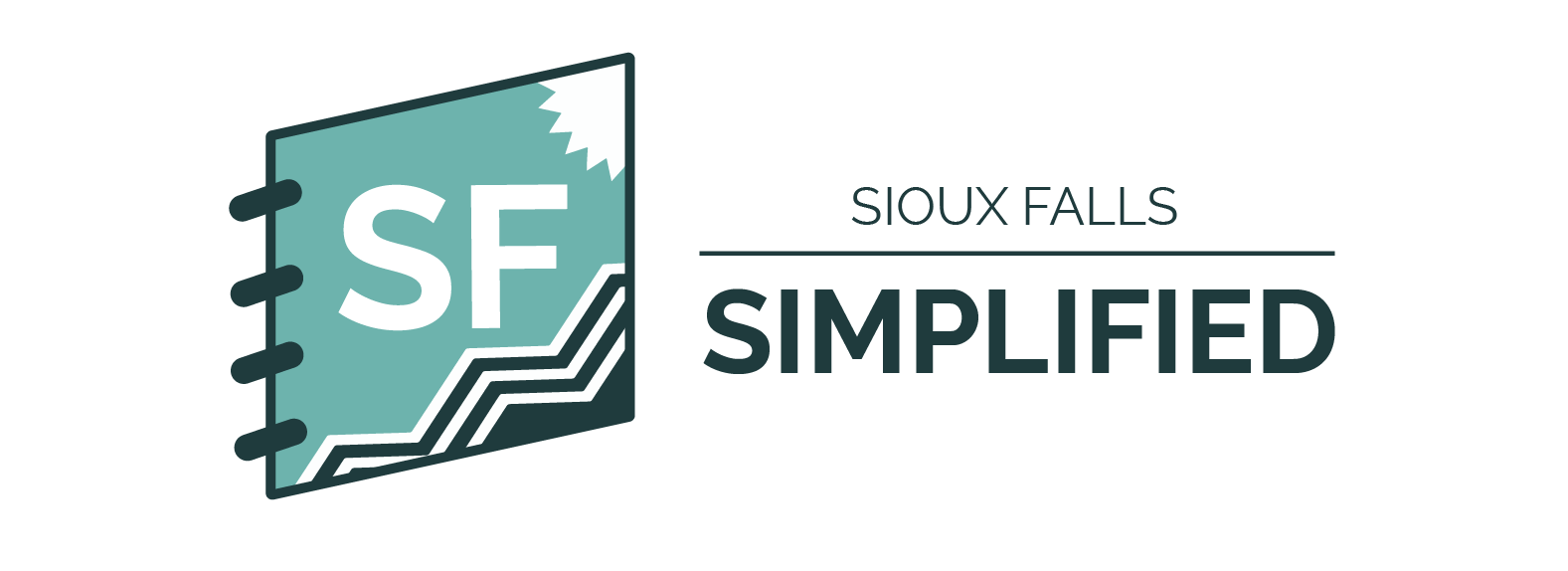Simplified: The city this week unveiled the master plan for Falls Park, including year-round activities, stuff for folks of all ages to do, expanding the park's boundaries and updating how people both walk and drive around the park. Here's a more in-depth look.
Why it matters
- The Parks and Recreation Department has been working on seeking public feedback on the Falls Park Master Plan for a couple of years now – including feedback on a citywide parks plan back in 2019 and awarding designer Confluence with the bid to do the full master plan back in 2021.
- Largely, people said they want to preserve the park's landscape and history, add amenities – bathrooms, play spaces, additional recreation, etc. – and improve how both cars and individuals navigate the park.
- The master plan's overarching goal is to create a year-round "signature park" that's a destination for people of all ages. That'll include a new pedestrian bridge, improved park access, a new visitor center and observation tower, a reworked farmer's market and more.
"Our vision is all about, whether you're 5 years old, 50 years old or 75 years old, there's something for you to do," said Jon Jacobson, principal and vice president at Confluence.
Tell me more about what's in the master plan
One of the first priorities of the master plan is to focus on improving the farmer's market area, Jacobson said.
Future improvements also include getting rid of parking in the middle of the park and improving vehicle circulation. There are also plans to include additional recreational opportunities like:
- urban fishing,
- an adventure park,
- a sledding hill,
- and mountain bike trails.
Infrastructure improvements include:
- updating the pedestrian bridge so it's wider and provides more viewing areas,
- building a new visitor center and observation tower in a different location in the park,
- adding an event center,
- renovating the horse barn,
- and modifying both walking and driving paths in and out of the park.
The master plan also emphasizes water quality, which will include expanded "no mow" areas to create buffer strips, as well as more native plants along the edges of the river.
Here are some visuals to help illustrate these proposed changes:
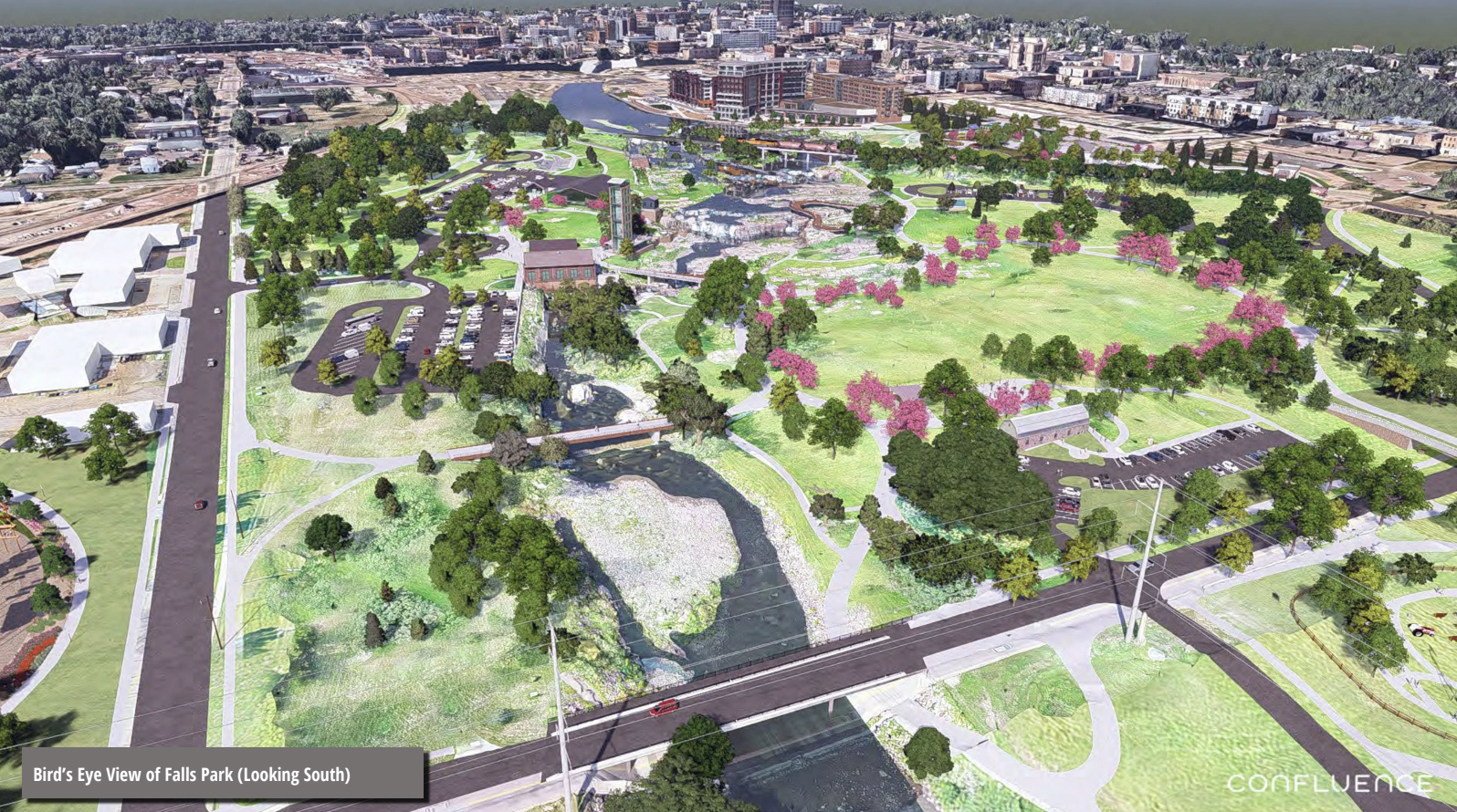
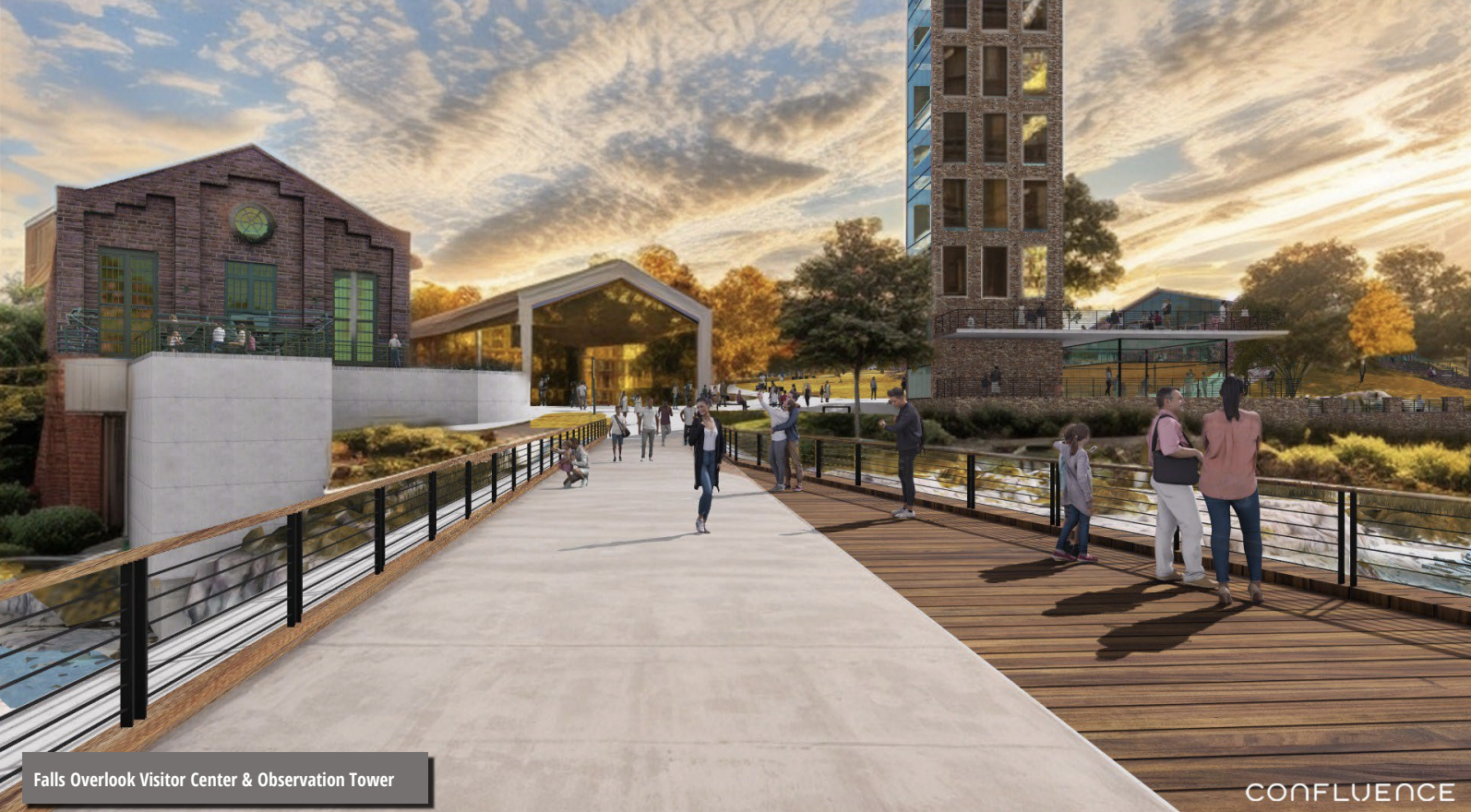
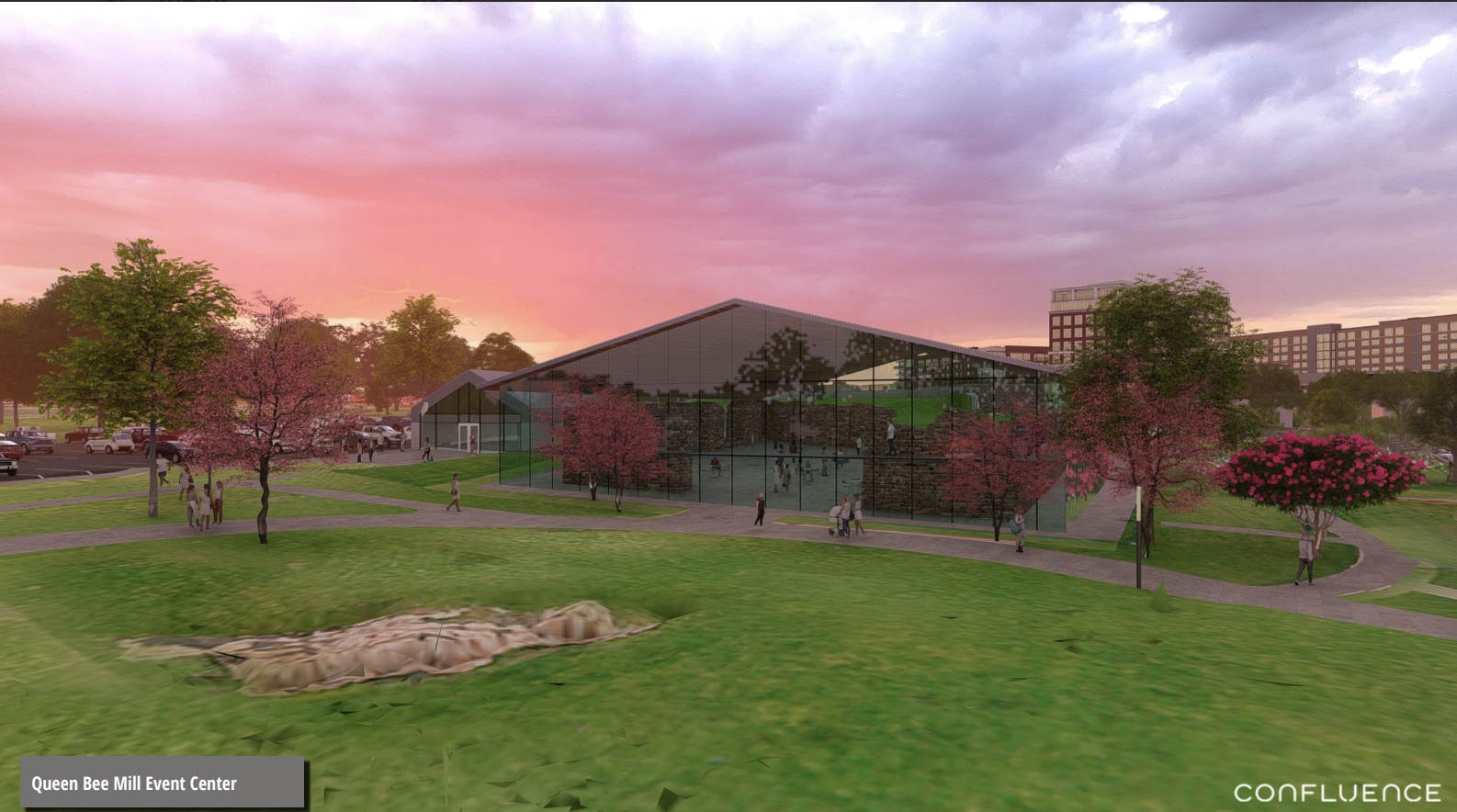
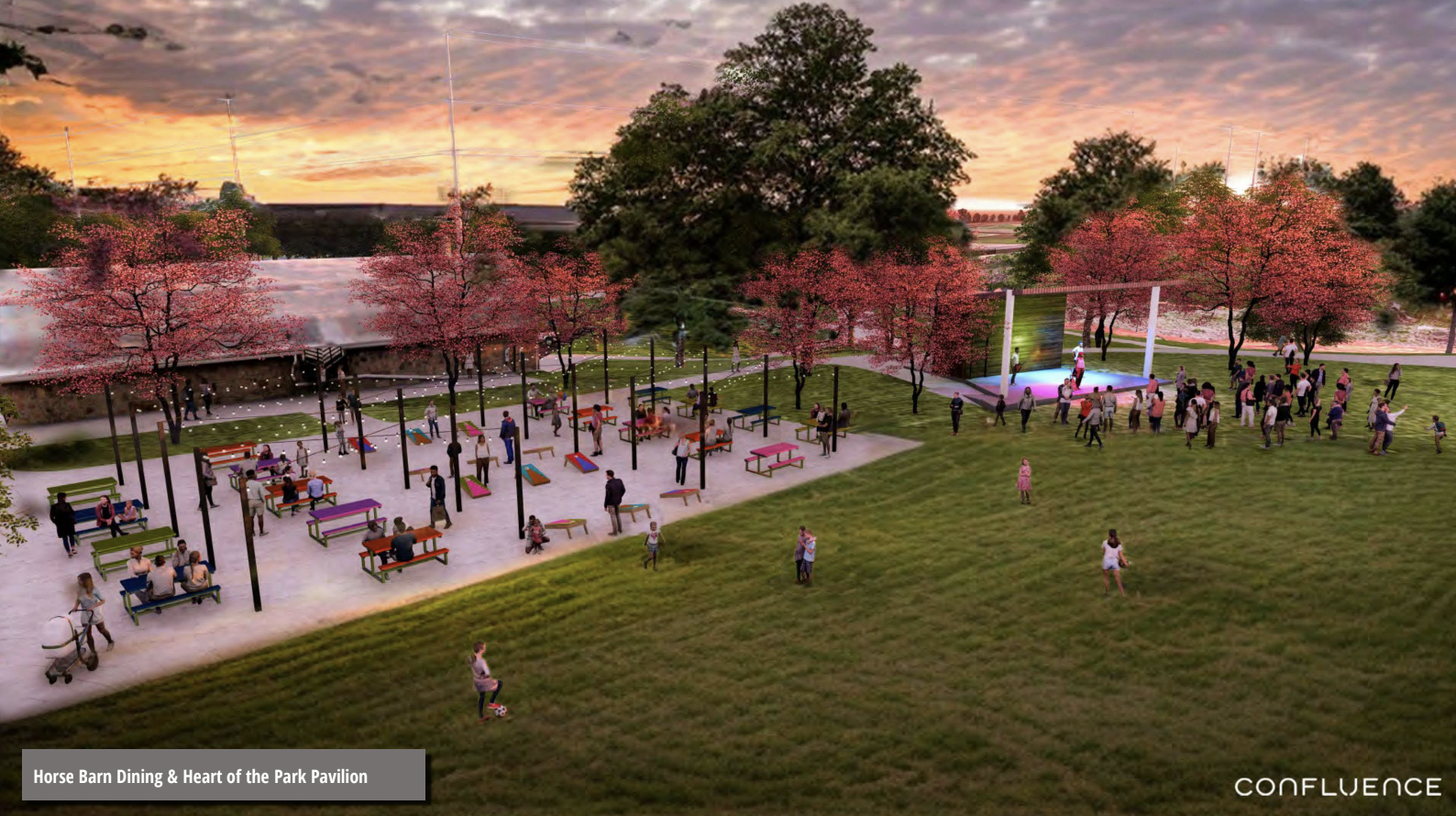
What happens next?
The plan will now be presented to the parks board and ultimately to the City Council for final approval before any phases of the plan are implemented.
And even after it's approved, it won't be an overnight change. The various phases of development will be slowly implemented over the next few decades.
Jacobson estimates the full implementation of the plan could cost upwards of $115 million to complete, so it'll likely be something the city takes on one little bit at a time.

